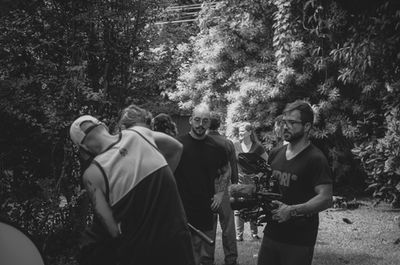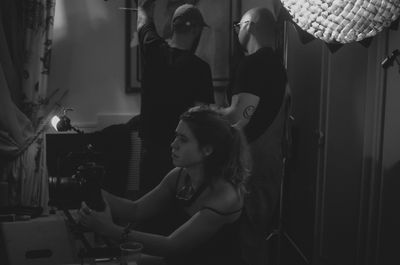'We, Brothers': Jones’ intimate behind-the-scenes journey into creation and execution

By Renata Jones
One of the most revealing aspects of We Brothers is that, when I first began writing it, I did not imagine it as a film noir. The aesthetics were still in development and my focus was on the relationship between the two protagonists, on their ambiguity, and on the emotions that bind them.
I wanted to stage a confrontation, a clash between two brothers, two people who have loved each other all their lives, yet whose personalities differ profoundly. Beneath these differences, however, both carry terrible secrets. At first, each believes the other is unaware of what they hide. But the truth, and the essence of the film, is that they know. They know, and they remain silent. And that silence is what makes the story different.
It is, in many ways, like life itself: we often think that those closest to us are blind to our hidden truths. But more often than not, they see them clearly. They simply choose not to speak, because they, too, carry secrets of their own.
As I continued writing, I realized that the story demanded black and white, shadows and light, nothing less than the visual embodiment of feelings: what emerges and what remains hidden. These qualities revealed themselves as inherently film noir. And I must say, embracing the noir style elevated both the film and the story itself.
The cinematography does more than capture images; it tells the story. Through the interplay of shadow and light, we see what is wrong, what is concealed, and the emotional currents beneath the surface. The visuals immerse the audience in the atmosphere, allowing them to feel the tension, the intimacy, and the weight of unspoken truths.

The search for authentic period costumes was another challenge. We found several pieces from the 40s, but some items had to be adapted from the 50s and 60s to fit the 40s aesthetic, including shoes. The color palette of the clothing had to be tested previously with the camera and a black-and-white filter, as tones translate very differently in monochrome than in color.
We were fortunate to find a perfectly preserved house from the 20s. However, many modern elements such as electrical outlets, air conditioners, and other contemporary features, had to be carefully removed or adapted.
The entire film was shot in this single location over the course of only three days, requiring precision, speed, and creativity at every step.
The team worked exceptionally well together. For most of the actors, it was the first time I had collaborated with them, and they were incredible in their roles. I had previously worked with Felipe Bandeira and Pietra Cezimbra on other projects, but for this film, the entire cast underwent a remarkable transformation through costumes and makeup.
Actresses Gabby Ballhausen and Pietra Cezimbra had to learn the transatlantic English accent, which was commonly required of actresses in the 50s by studios; a blend of British and American pronunciations.
At the same time, the actors were allowed to speak in a rougher, more natural style, reflecting the Italian-American community in Chicago. It was a coarse, hard-to-recognize English, yet surprisingly clear and authentic, adding depth and realism to the performances.
An extensive amount of research went into understanding Chicago in 1942, during the height of World War II. While the film itself omits explicit historical references, I decided to weave in subtle, indirect hints of what was happening in the city at that time. Chicago was being flooded with giant posters and billboards everywhere, a true visual pollution. During the day, the cityscape was dominated by these massive advertisements, creating a sense of chaos. At night, however, the glow of nightclub lights contrasted sharply with the cluttered daytime streets, creating a visual tension that mirrored the hidden emotions and conflicts between the characters. It's all very very subtle.
Here are several photos taken behind-the-scenes during production of Jones' 'We, Brothers'. Intended for editorial use only. All material for educational and noncommercial purposes only.
Photos credit: André Drum.





























